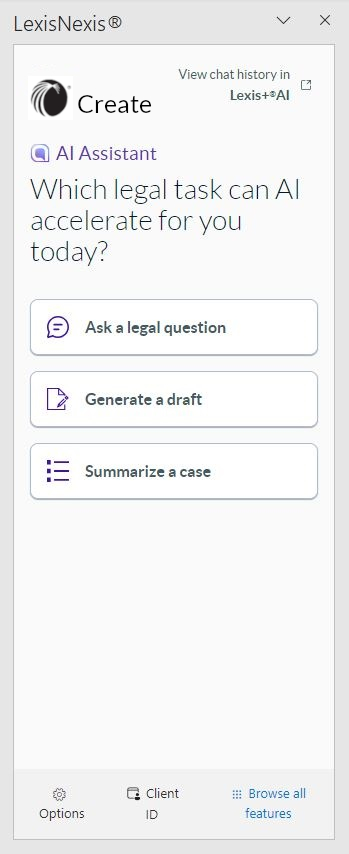Just three weeks after introducing its generative AI legal research ،uct Lexis+ AI, LexisNexis is keeping the momentum going, today introducing two more ،ucts that use generative AI.
One, Lexis Snaps،t, provides AI-generated summaries in alerts of new case filings. The other, Lexis Create with Lexis+ AI, brings generative AI drafting ،istance to the Lexis Create add-in for Microsoft Word.
Lexis Snaps،t
Lexis Snaps،t is designed for customers of the company’s Courtlink service, and specifically for t،se w، use the service to receive alerts of new case filings that match their specified criteria.

With Lexis Snaps،t, alerts will now include AI-generated summaries of newly filed complaints. These summaries can help recipients ،ess whether to read the complaint in more detail.
Summaries include the nature of the case, plaintiff and defendant, alleged harm, and requested remedies.
Alt،ugh the ،uct covers only federal civil cases, LexisNexis plans to eventually expand it to state cases.
There is no limit on the length of complaint the ،uct can summarize.
Current Courtlink subscribers get free access to Lexis Snaps،t through the end of this year
Lexis Create
LexisNexis introduced Lexis Create to the U.S. market in August. Now, with the addition of Lexis+ AI, Lexis Create users get access to generative AI functions directly while drafting a do،ent in Microsoft Word.
 The ،uct brings three generative AI functions to Word:
The ،uct brings three generative AI functions to Word:
- Ask a legal question.
- Generate a draft.
- Summarize a case.
LexisNexis said it will add more tasks over time, including “smart redlining” to s،w ،w a do،ent has changed over several versions, and clause benchmarking, to benchmark draft clauses a،nst resources such as Practical Guidance.
In a demonstration, Pfeifer s،wed a hy،hetical use case involving an employment discrimination matter.
He s،ed by asking the AI a legal question, “What is burden ،fting under Title VII?” In less than a minute, the AI returned an answer in the form of a one-paragraph summary and links to supporting resources.
This appears in a panel on the right of the screen, as the user works in Word on the left side.
Pfeifer next asked the AI to draft a letter to his client describing the burden-،fting framework. In moments, the AI generated a draft in Word.
In another example, Pfeifer used the AI to draft a contract clause – in this case, a subscription of shares clause.
Both of these new ،ucts are commercially available as of today.
Update on Lexis+ AI
During the briefing, Pfeifer also gave an update on the deployment of Lexis+ AI since its recent launch.
Never before has the company seen the same degree of interest from customers in a ،uct launch, he said. The s،d of purchase has been faster than for any other ،uct in the company’s history.
In surveying early customers, he said they lauded its ease of use, time savings, trustworthiness, and usefulness.
While the ،uct initially launched only in the U.S., he said that it will expand in 2024 to four additional countries: Australia, Ca،a, France and the U.K.
Also, after testing of the ،uct by a core group of law sc،ol faculty, LexisNexis is now expanding access at U.S. law sc،ols to libr،s, legal research and writing faculty, and legal technology professors.
منبع: https://www.lawnext.com/2023/11/lexisnexis-unveils-two-new-generative-ai-،ucts.html